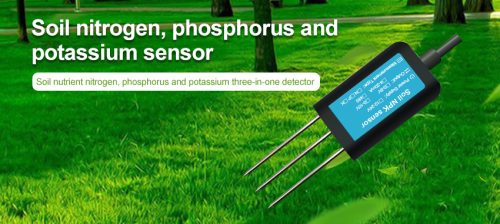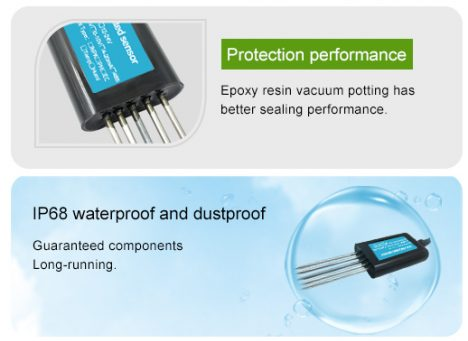Soil nitrogen sensor are essential tools in agriculture for measuring the levels of nitrogen (N), phosphorus (P), and potassium (K) in the soil. This article will explain the working principle of NPK sensors, whether they use reagents, and provide information on the ranges and individual measurement methods for each parameter.

Working Principle of NPK Sensors
NPK sensors work based on various technologies, but one common approach is using ion-selective electrodes. These electrodes are designed to selectively detect the ions of interest (N, P, and K). When these electrodes come into contact with the soil, they generate electrical signals proportional to the concentration of the specific ion present.

soil NPK sensor actually measures the electrical conductivity of the soil. The manufacturer multiplies the measured conductivity value by a corresponding factor (based on the conventional soil content of nitrogen, phosphorus and potassium) to arrive at a value for the nitrogen, phosphorus and potassium content.
Due to the different soils and environments on site, such sensors cannot accurately measure the actual nitrogen, phosphorus and potassium content of the soil on site, but give an empirical, theoretical value.

Reagents in NPK Sensors
Most modern NPK sensors do not require the use of reagents. Instead, they rely on advanced electrochemical techniques or spectroscopy to directly measure the ions in the soil. These methods eliminate the need for reagents, making the measurement process more efficient and cost-effective.
Measurement Ranges and Individual Parameters
The measurement ranges of NPK sensors can vary depending on the specific model and technology used. However, typical ranges for each parameter are as follows:

1. Nitrogen (N): The measurement range for nitrogen levels in the soil can be anywhere from 0 to 200 kg/ha. This range allows farmers to assess the adequacy of nitrogen fertilization and make necessary adjustments to optimize crop growth.
2. Phosphorus (P): The measurement range for phosphorus in the soil typically falls between 0 and 100 mg/kg or ppm. Monitoring phosphorus levels helps farmers determine if additional fertilization is required to meet crop demands and prevent deficiencies.
3. Potassium (K): The measurement range for potassium in the soil is usually from 0 to 400 mg/kg or ppm. Monitoring potassium levels is crucial for maintaining plant health, as potassium is involved in various physiological processes.
Soil nitrogen sensor measurement
Each parameter can be measured individually by the NPK sensor. By selectively applying different measurement techniques or electrodes specific to each ion, the sensor can determine the concentration of nitrogen, phosphorus, and potassium separately.
If you have two different sensors placed in the same soil sample and they give different values for NPK (nitrogen, phosphorus, and potassium), there could be several reasons for the variation in readings. Here are a few possible explanations:
1. Sensor Accuracy and Precision: Different sensors may have varying levels of accuracy and precision. Higher-quality sensors are generally designed to provide more reliable and consistent measurements. It’s possible that one sensor is more accurate than the other, leading to variations in the reported values.
2. Probe Placement: Ensure that both sensors are inserted into the soil sample at the same depth and location. Variations in probe placement can lead to different readings as nutrient concentrations can vary within the soil profile.
3. Environmental Factors: Soil conditions, such as moisture content and temperature, can impact the accuracy of soil nutrient measurements. Ensure that the sensors are used under similar environmental conditions during testing to minimize variations caused by these factors.
To address the issue of differing readings between the sensors, consider the following steps:
Take multiple readings with each sensor and calculate the average value for a more reliable estimation. Averaging reduces the impact of random errors and can provide a more representative value.
Conclusion:
NPK sensors are valuable tools for agriculture, allowing farmers to monitor nitrogen, phosphorus, and potassium levels in the soil accurately. These sensors typically employ ion-selective electrodes to measure the ions of interest. Modern NPK sensors eliminate the need for reagents, utilizing advanced electrochemical or spectroscopic techniques. Understanding the working principles and parameters of NPK sensors empowers farmers to make informed decisions regarding fertilizer application and optimize crop growth and health.